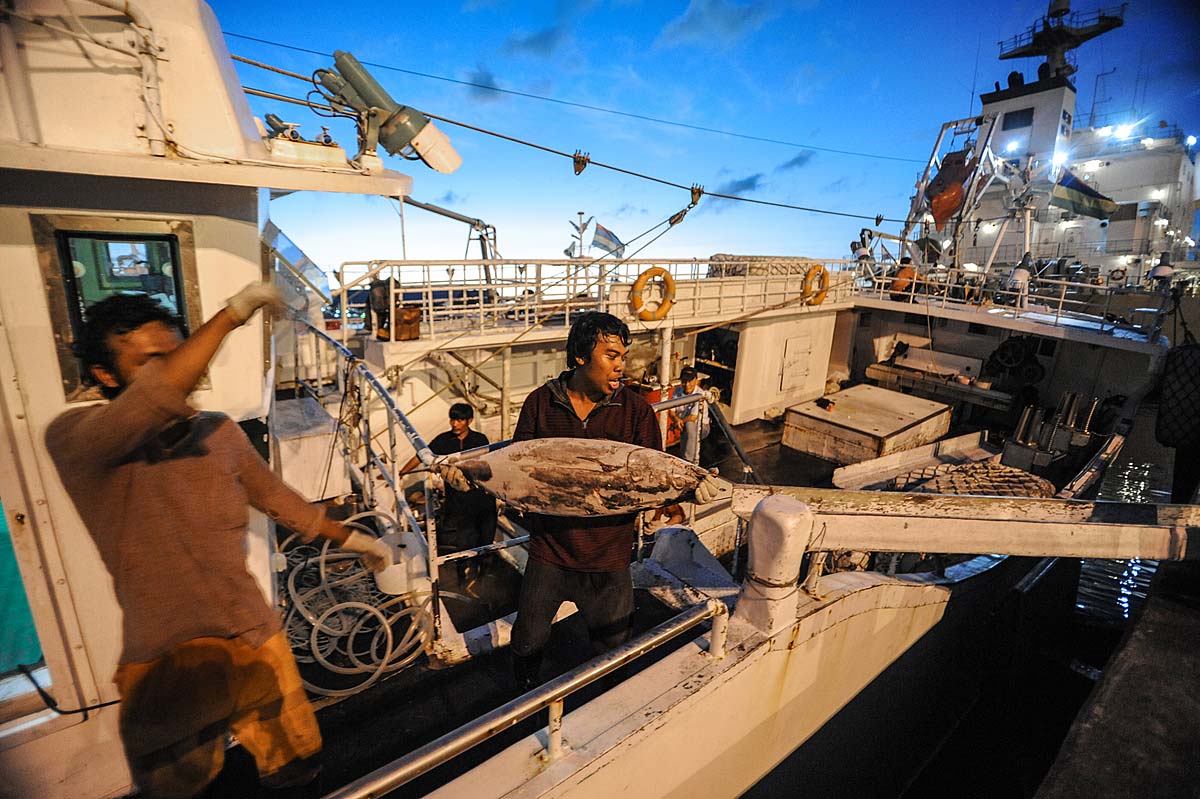Farming animals carries significant implications for our planet and public health, while also inflicting immense suffering on animals. But one often overlooked aspect is the threat it poses to the very people who work in these industries. While we are often focused on the ethics of meat production, it’s also important to shed light on the risks to those working on farms in slaughterhouses. Here, we highlight some of the many risks associated with this kind of occupation.
Agriculture Is a Dangerous Industry
The agriculture industry is the most dangerous one in which to work, both in the United States and elsewhere around the globe. From slurry pits to slaughter lines and from injury to mental health crises, farming and slaughtering animals places a huge burden on people, too.
Zoonotic Diseases
Farmers and workers who work closely with farmed animals and their flesh are at risk of contracting zoonotic diseases. These are diseases that can transmit from animals to people. Among them are anthrax, bovine tuberculosis, brucellosis, cryptosporidiosis, giardiasis, hantavirus diseases, leptospirosis, ovine chlamydiosis, psittacosis and rabies — all listed on the US Department of Labour’s Occupational Safety and Health Administration (OSHA) website. These, and many other diseases, can have severe health implications for those exposed while working with infected animals.

Injury and Death
Slaughterhouse and meat cutting plant workers have to work with extremely sharp tools and dangerous machinery on a daily basis. A federal report stated that these workers face traumatic injuries including amputated limbs and severed fingers. According to data compiled by OSHA from 2015 to 2017, there were, on average, two amputations per week reported among workers in slaughterhouses. It is widely known that injuries in the meat industry are underreported, often because the workers may be refugees or immigrants without proper work permits, so the rate could be much higher.
Amongst all manufacturing industries, injury and illness rates in the meat and poultry slaughtering and processing industry are the highest.

Injury and Death in the Fishing Industry
Workers in commercial fisheries face various occupational health challenges according to the UN’s Food and Agriculture Organization. These include skin cancers and allergies resulting from prolonged, sun-exposed work on the water. Eye issues like sunburn and blurred vision can also arise due to excessive exposure to UV rays, and hearing problems can occur among those who work in noisy engine rooms. Additionally, injuries are common, stemming from sharp objects and fish-handling equipment.
On top of that, there is the inherent danger to life of being at sea. Shockingly, 100,000 people are estimated to die every year in the fishing industry. Many of these deaths are avoidable but the industry is so poorly regulated and workers’ rights are commonly discarded, making it the most lethal industry on Earth. Very often, deaths go unreported.

Farm Respiratory Illnesses
Raising a large number of animals in confined spaces, as is the norm in modern farms, exposes the people working there to a “spectrum of upper and lower respiratory tract disorders,” according to published research by lung specialists. These include rhinitis, mucus membrane inflammation syndrome, sinusitis, asthma, asthma-like syndrome, chronic bronchitis, chronic obstructive pulmonary disease (COPD), hypersensitivity pneumonitis and organic dust toxic syndrome (ODTS).

Animal-Related Injuries
Working with large animals like bulls, cows, and buffaloes poses a significant risk of injury. Farmers can be crushed, gored, or otherwise harmed while herding, moving, or handling animals. To avoid such harm, farm workers often have electric rods or tongs to scare and immobilize the animals. Even so, farmed animals can exhibit a range of potentially dangerous behaviors, including biting, kicking, goring, crushing, pinning between other animals or farm structures, pecking, scratching, dragging, and ramming which are potentially dangerous for the workers.
Mental Health Challenges
Some studies have found that farm workers have a greater risk of depression and suicide. People who work in slaughterhouses face different, but equally troubling, psychological challenges. The nature of the work itself is violent, and thus may inherently cause psychological distress or harm. This work has been linked to PTSD and PITS (perpetration-induced traumatic stress). Keeping the slaughter line moving despite the difficult conditions, the repetitive nature of the job, the blood, and the distress of the animals means workers must disassociate from what they are doing in order to keep their job. And that places a huge psychological burden on the worker.
In the book Slaughterhouse: The Shocking Story of Greed, Neglect, and Inhumane Treatment Inside the US Meat Industry, a former abattoir employee shares a poignant perspective:
“The worst thing, worse than the physical danger, is the emotional toll. If you work in the stick pit [where hogs are killed] for any period of time—that lets you kill things but doesn’t let you care. You may look a hog in the eye that’s walking around in the blood pit with you and think, ‘God, that really isn’t a bad-looking animal.’ You may want to pet it. Pigs down on the kill floor have come up to nuzzle me like a puppy. Two minutes later, I had to kill them. … I can’t care.”
You may note the dissociation in his words: killing ‘things’ and petting ‘it’.

Violence, Crime, and Substance Abuse
In order to cope with this work, it is common for slaughtermen to medicate with alcohol and drugs. Unsurprisingly the link between slaughter work and partner or domestic violence is strong. A worker quoted in the same book above said, “So a lot of guys at Morrell [a major slaughterhouse] just drink and drug their problems away. Some of them end up abusing their spouses because they can’t get rid of their feelings.”
A 2009 study examined the relationship between slaughterhouses and crime rates in the US from 1994 to 2002, using FBI crime data and the US Census. It revealed that slaughterhouse employment was associated with higher rates of overall crime, especially violent and sexual crimes, including rape, compared to other industries.
The meat industries are clearly a danger to society, too.
Meeting Targets, Ignoring the Effects
Slaughterhouse profits are directly related to the number of animals killed or the pounds of meat processed per hour. According to the US Animal Kill Clock, the number of land animals killed per hour in the United States is 974,100 and if aquatic animals were included then it would be 6,328,000 animals per hour. The responsibility for maintaining these desperately sad high numbers falls on the individuals working within these industries.
Farms’ Environmental Hazards
The environmental impacts of meat production are becoming more and more evident. The farming of billions of animals generates a massive amount of waste, leading to issues such as contamination of water sources and harm to aquatic ecosystems. This is not just bad for wildlife, it is bad for people who live locally. In the US, vast factory farms are often sited within communities of color, which ensures cheap, poverty-waged labor resulting in them having to live with polluted air and water sources. People who live near factory farms have an elevated risk of lung disorders.
An Exploitative Industry
It’s not just that the production of meat (including fish), dairy, and eggs is inherently dangerous, it is a sector riddled by exploitation.
OXFAM America’s report Lives on the Line highlights the risks poultry workers face at the top four poultry businesses in the US. The report states that workers on the processing line earned very low wages, encountered higher rates of workplace injuries and illnesses, and frequently endured a fearful work environment.
The commercial fishing industry, as we have seen, is one of the most hazardous industries with an average rate of 115 worker deaths per 100,000 workers compared to the US average of four deaths per 100,000 among all workers. But the numbers only tell us a small part of the story. Slavery is all too common in this industry, with violence and murder also reported.
In Europe, migrant slaughter workers report that middlemen take their wages and house them in appalling conditions. At work, they have few rights and protections.
All across the world, the most dangerous processes are often run by people from low-income groups including undocumented immigrants. Often these people have few options and have little choice but to put their lives on the line in order to make profits for others.
Conclusion
Addressing these many serious occupational hazards and environmental challenges requires collective action. After all, what is bad for people is also bad for the planet and for animals. Recognizing the interconnectedness of these challenges is essential for finding sustainable solutions. Striving to eliminate meat, eggs, and dairy from our diets represents a significant step in mitigating this human crisis. Through informed choices, we can actively contribute to veganism becoming a pivotal and powerful social justice movement that helps people as much as it helps animals and the planet.



